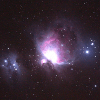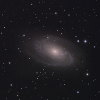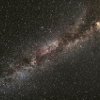Post #16.
Dear Mark.
No, I am talking about refractors, Dall Kirkham, and Maksutovs.
I was pretty flexible, and as I said planets in the U.K. are on average at a maximum elevation of under 40 degrees.
In Finland an average maximum of 30 degrees.
I looked straight through.
The 12.5 inch Dall Kirkham was driven, so could be used up to 700x without a problem.
The refractors and Maksutovs mostly undriven.
My 8.5 inch Newtonian was driven.
The 14.5 inch Newtonian undriven.
6 inch Newtonian undriven.
135mm f/16 refractor driven.
The only notable occasion I used a 90 degree mirror diagonal on the Dall Kirkham was to view M81 and M82 at the zenith.
A spectacular view.
M42 is low and needs no diagonal.
All my astro work was inverted view, although Horace Dall designed his scopes for upright views with relay lenses, but he was the exception.
Basically users who use upright images are not in general ones who contribute regular observations to national or international organisations.
For terrestrial observations I used a Porroprism adapter on various scopes and also some regular spotting scopes either straight through or 45 degrees.
I don't use glasses with either telescopes or binoculars.
I have no problem with eye placement except with crazy modern binoculars with excessive eye relief.
I had no problem with 0.3mm exit pupils.
I only had problems with direct views at elevations above 60 degrees.
Above that I would use a diagonal.
Regards,
B.
Dear Mark.
No, I am talking about refractors, Dall Kirkham, and Maksutovs.
I was pretty flexible, and as I said planets in the U.K. are on average at a maximum elevation of under 40 degrees.
In Finland an average maximum of 30 degrees.
I looked straight through.
The 12.5 inch Dall Kirkham was driven, so could be used up to 700x without a problem.
The refractors and Maksutovs mostly undriven.
My 8.5 inch Newtonian was driven.
The 14.5 inch Newtonian undriven.
6 inch Newtonian undriven.
135mm f/16 refractor driven.
The only notable occasion I used a 90 degree mirror diagonal on the Dall Kirkham was to view M81 and M82 at the zenith.
A spectacular view.
M42 is low and needs no diagonal.
All my astro work was inverted view, although Horace Dall designed his scopes for upright views with relay lenses, but he was the exception.
Basically users who use upright images are not in general ones who contribute regular observations to national or international organisations.
For terrestrial observations I used a Porroprism adapter on various scopes and also some regular spotting scopes either straight through or 45 degrees.
I don't use glasses with either telescopes or binoculars.
I have no problem with eye placement except with crazy modern binoculars with excessive eye relief.
I had no problem with 0.3mm exit pupils.
I only had problems with direct views at elevations above 60 degrees.
Above that I would use a diagonal.
Regards,
B.
Last edited:
















